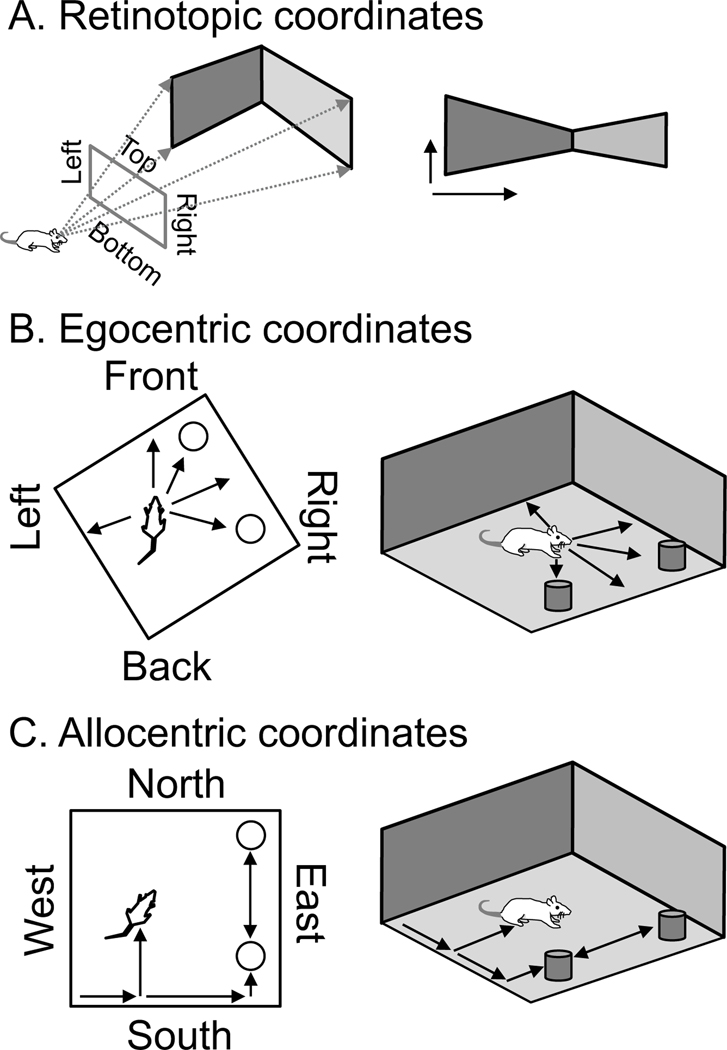Figure 1.
Schematic overview of egocentric versus allocentric coordinates. A. Animals receive and detect sensory input in coordinates centered around specific receptor organs. For example, visual input arrives in retinotopic coordinates as shown on the right. B. Egocentric coordinates. The sensory input about an environment barrier or object may be coded initially in egocentric coordinates (front, back, left right), based on the angle and distance relative to the animal (arrows). C. Allocentric coordinates. The same scene can be considered in allocentric coordinates, concerning the location of the animal relative to barriers and objects. Arrows coordinates of the position of the animal and objects relative to environmental barriers, rather than relative to the animal (Byrne et al., 2007; Raudies and Hasselmo, 2015; Bicanski and Burgess, 2018).

